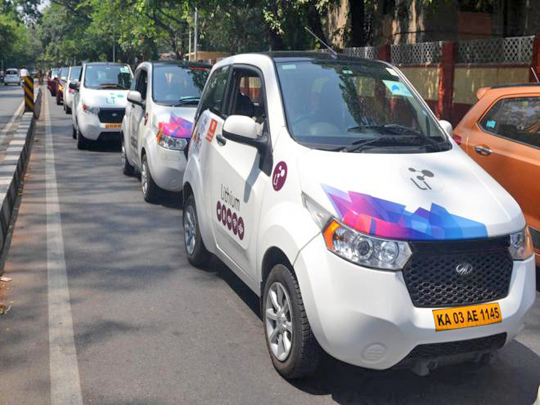New Delhi, May 12: Accelerated adoption of electric and shared vehicles could save USD 60 billion in diesel and petrol costs while cutting down as much as 1 gigatonne (GT) of carbon emissions for India by 2030, says a joint report released today by Niti Aayog.
It said however that the country faces challenges that signal the "gravitational pull of privately owned vehicles".

The report estimates that India can conservatively save up to 64 per cent of anticipated passenger mobilitity-related energy demand and 37 per cent of carbon emission by 2030.
"By 2030, this would result in an annual diesel and petrol reduction of 156 million tonnes of oil equivalent," said the report, 'India Leaps Ahead: Transformative Mobility Solution', produced by NITI Aayog and Rock Mountain Institute.
"At current oil prices, this would imply a net usual fuel cost saving of approximately 3.9 lakh crore by 2030," the report added.
Releasing the report, NITI Aayog CEO Amitabh Kant said whether ones likes it or not electric vehicles (EVs) will happen in India and this is inevitable.
"The challenge is how we do it quickly. How do we do it to scale and size," he said.Noting that the cost of battery is falling by about half every five years, he said that as a result in the next 4-5 years, the electric vehicles even with batteries would not be far more expensive than the petrol or diesel vehicle, while operational cost will be just 20 per cent of that of petrol vehicle.
Stressing that the government is fully committed to driving this electric vehicles programme, Kant said EVs will come into India in a big way in about a decade's time."But challenge is if we delay it then we will end up importing batteries instead of oil and it will be difficult for us to take leadership," he cautioned."So we should drive our own EVs programme, which will enable us to manufacture EVs," Kant added.
He also pointed out that quick volume alone will enable India EVs programme to succeed."And therefore aggregation of demand on a large scale is important. It's important that government drives it by focusing on government vehices and public vehicles," Kant said.





Comments
Add new comment